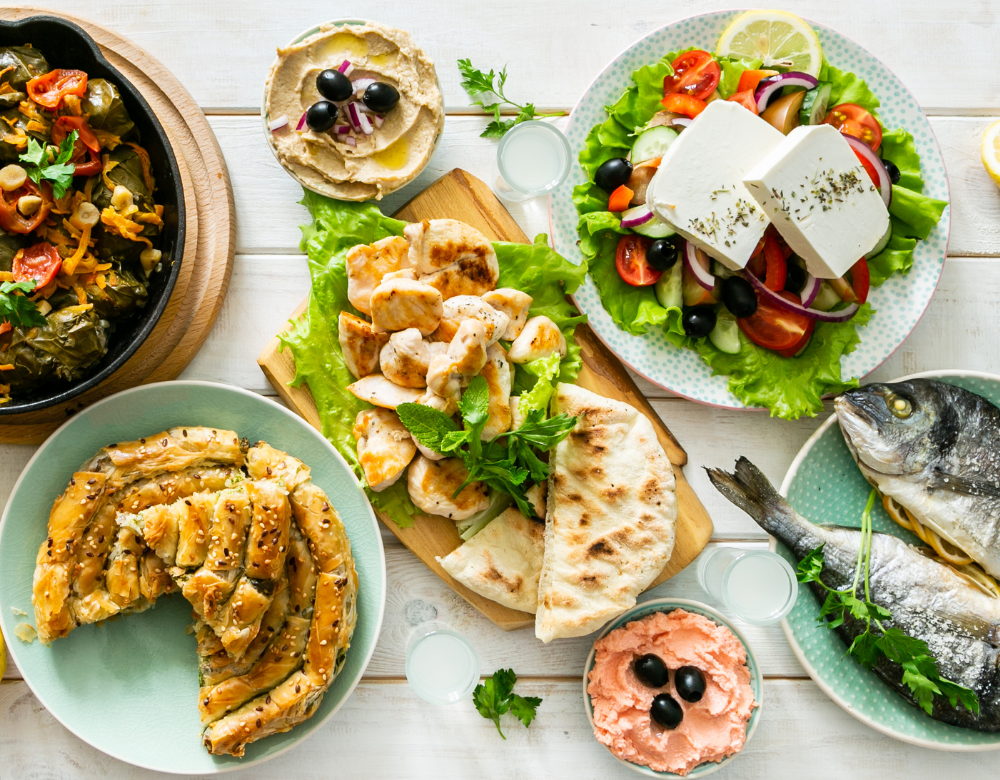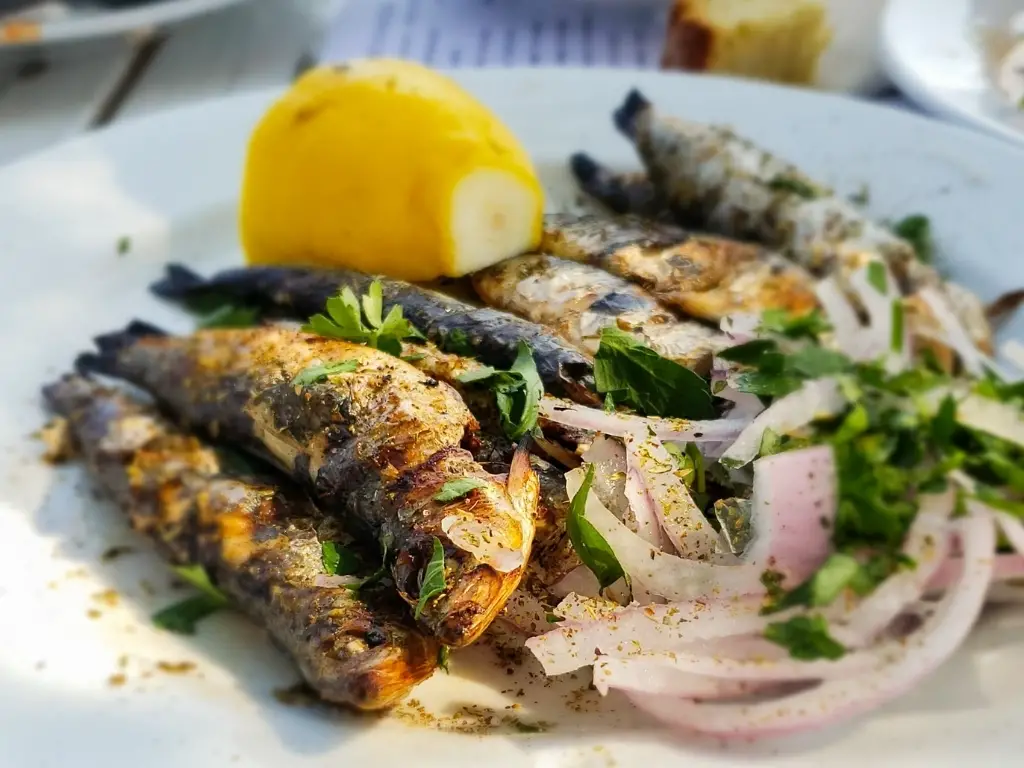



13 Things That Always End Up Happening In A Greek Taverna
No, breaking plates is not a routine thing in a Greek taverna!
Paper Tablecloths
- Tip: The less fancy the establishment the less touristy it usually is!




Don’t let this confuse you, a paper tablecloth would go on top!
There Might Be No Menu
Do not be surprised if, upon stumbling across the cutest little Greek taverna in a small village or island with less tourists, you realize there is no menu! A lot of places will have an indicative menu, with pages added on, menu items scribbled out and pencil notations where things have been added. It is also not uncommon to have a menu that is particularly long but not all items are available on the day, due to the season. It is probably for this reason why a lot of people end up doing the next thing instead…
☞ Related: 10 Greek Traditions That Will Make You Feel More Greek
Asking What To Order




Picking The Fish
Food Comes Out As Its Cooked
There are many great things about Greek tavernas but a classy dining experience is not one of them. Food will often come out as it is cooked, so your salads and appetizers will arrive soon after your order. Meat dishes and seafood will slowly make their way to you after so pace yourself accordingly!
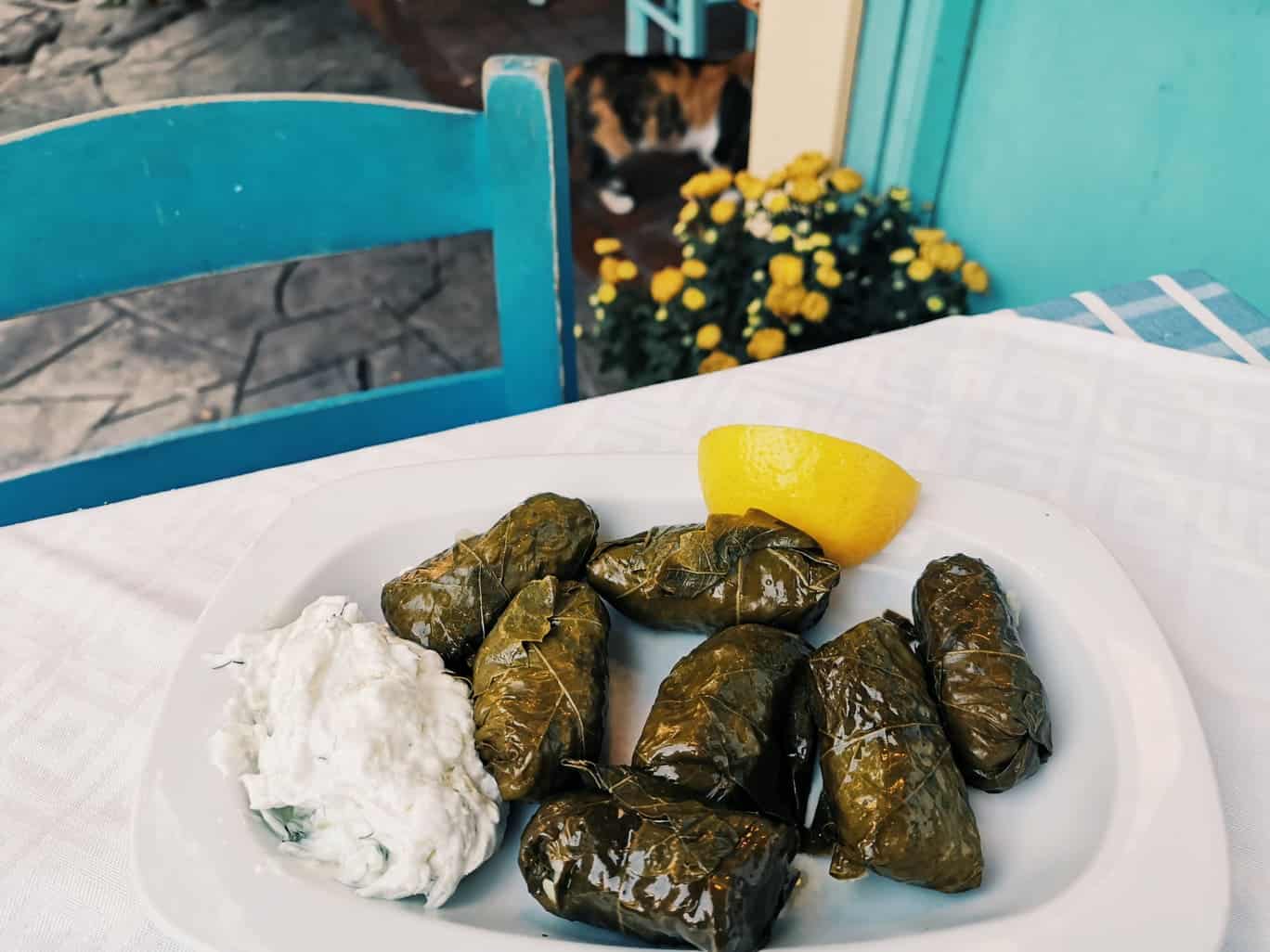



- Directions: You can always request for your food to arrive all at the same time. Island destinations that receive a lot of international tourists may also be more inclined to advise you of it when placing your order.
You Share The Food You Order
This is probably the part that people have a love/hate relationship with. Greeks traditionally eat communal style. Salad bowls are placed in the middle, as well a dips, potatoes, vegetables and even some main dishes and everyone is free to grab something with their fork. Using your fork to eat from a common plate is not considered rude but it is not weird to see serving spoons, just in case. This also makes ordering easier, as people just suggest the appetizers they want to share and then pick a few salads or dips for the table. A typical order includes dolmadakia, tzatziki, a Greek salad and some french fries. Add one fried calamari and a plate of moussaka and you have an easy meal for two!
Just Put The Bread Down
Oh, the bread! There is something irresistible about toasted bread with olive oil and oregano covered in some tzatziki. And even though we know better than to stuff ourselves with bread before the main dishes arrive, it seems like we never learn.
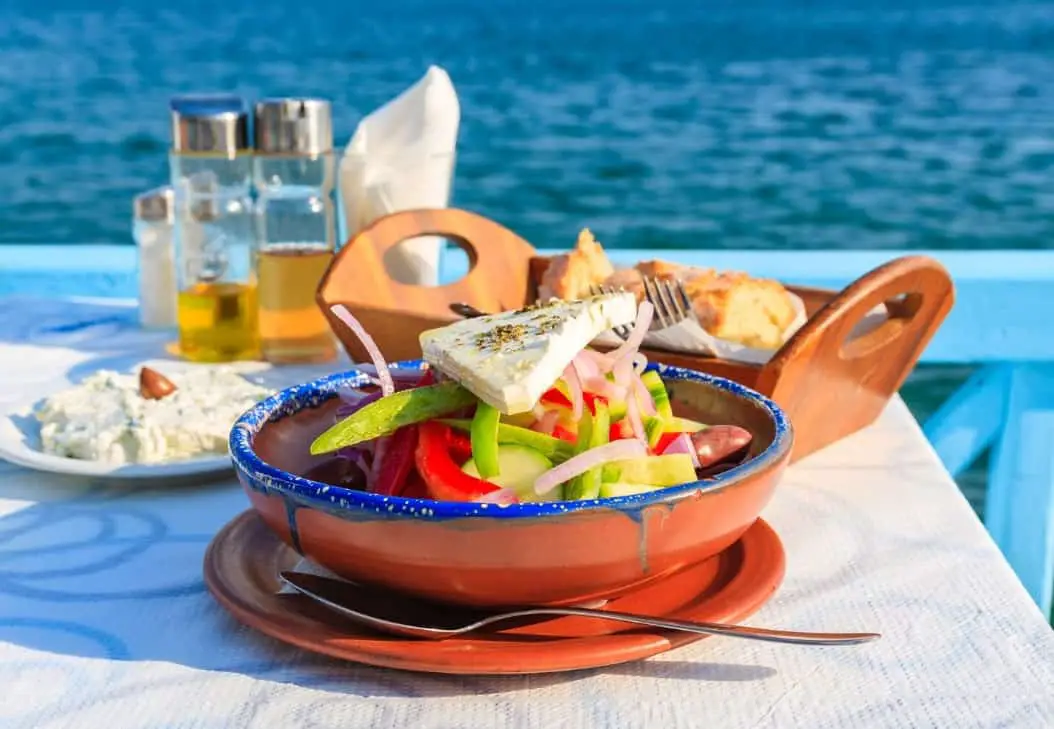



The Secret Chef
The secret chef in a lot of traditional Greek tavernas is the yiayia or grandma! Greek women are the guardians of food. Their traditional recipes have been passed down through generations and can vary considerably from region to region or family to family. They make some of the most delectable spinach and cheese pies, infuse incredible flavours into their dolmades (vine leaves) and can whip up desserts that shine in their simplicity and aromas. So, next time you are eating in a Greek taverna inquire as to whether a Greek yiayia makes any of the dishes and order some of them!




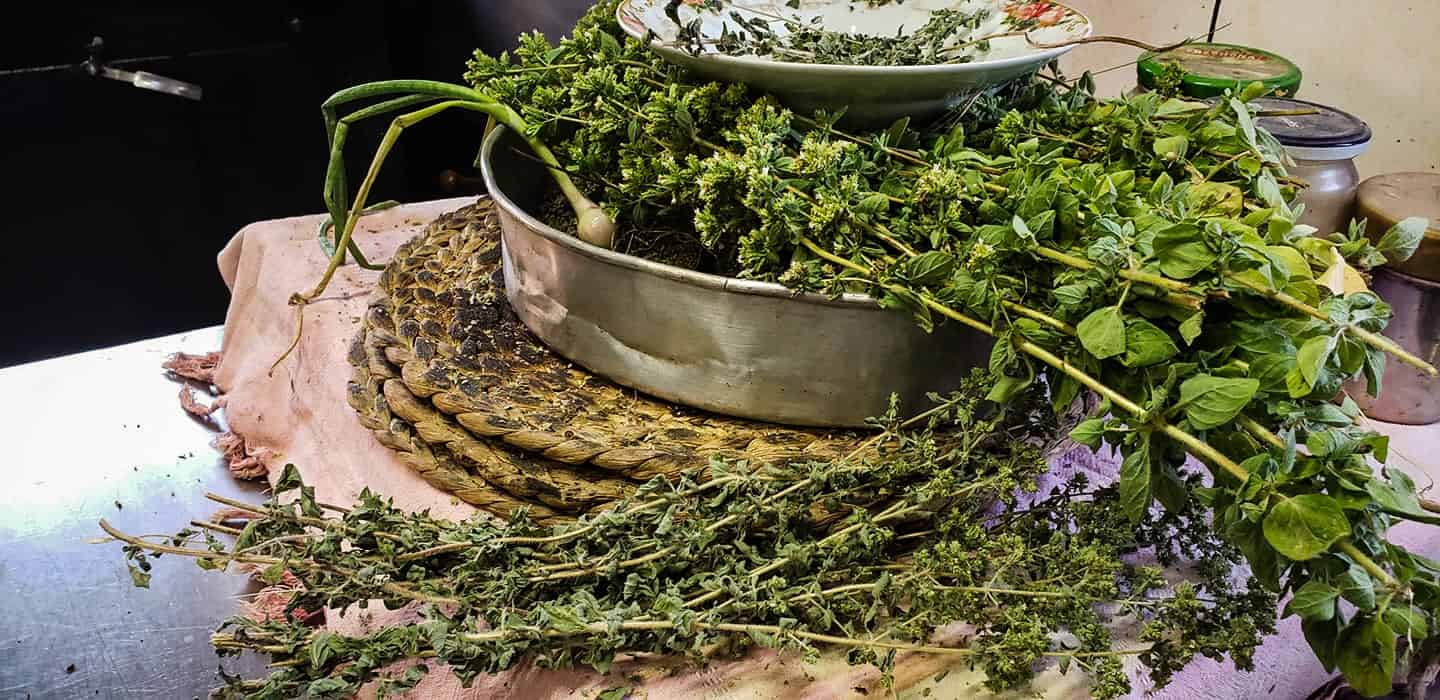



You Order Enough For An Army
It is a truth universally acknowledged that a Greek family eating at a Greek taverna will order enough for a small village. The stereotypes are once again too true to ignore. Ordering in a Greek taverna seems to surpass the realm of the logical and venture into a different domain altogether, the “I need to eat as much as bears before hibernation”. I have often wondered whether this is done purely as a practice of saving face in front of visitors and showing that you can afford a lot of good food or if we are simply a nation that loves food. The Americans may get a bad rep for their humongous food portions but a Greek yiayia serving food for her grandchildren can probably top that. In general, I think the Greek lifestyle demands that food is enjoyed in a slow process of eating, drinking, dancing and conversing with your friends and family, which in turn allows for more food to be consumed within that space of hours.




Cute Fury Beggars
If you have never considered taking a stray cat home that you found at a taverna, then you probably were not raised in Greece! From the island of Lemnos, to Crete and every taverna I have been to in the mainland, there was never a time that a stray kitten was not there to demand my food scraps. In general, they are harmless and unnoticeable and may simply hover around under your table for any spare bites of food. Shop owners in general, will advise against feeding the animals to avoid a whole army of strays, taking over the place.




The Music Of Greece
No music other than Greek traditional music could ever be played in a Greek taverna setting. It simply doesn’t make sense. Extra points if the establishment has a live band at night, and space for people to get up and dance. It doesn’t matter whether you know the steps or not, the simple rhythm will carry you into the line and free up enough space for the next round of eating!
Dessert is Free
One thing people may not know about traditional Greek tavernas is that they serve dessert for free at the end. That is not true for fancier establishments so if no dessert comes out for you, there is no reason to feel as though you have been wronged! Popular choices in the summer are yoghurt with fruits and jam and ravani with ice cream, a syrupy semolina cake that is sweetened with orange zest. In Crete, apart from dessert most places will also serve “raki” a strong alcoholic drink that feels like vodka but can also be served warm and sweetened with honey, lemon or other spices. It is the perfect digestif especially before an afternoon siesta. Be careful though, while the locals are used to it, a few too many of these can make you quite drunk, quite fast!




Even if you get no dessert, it is not hard finding a place that serves it! Some of the best loukoumades we ever tried are pictured above on the island of Ikaria!
Teach Me To Dance
If you are in a Greek taverna and notice people getting up to dance, count yourself lucky and join in! You are more likely to witness this in local taverns at dinner time where everyone has relaxed after a few Greek wines. Greeks love to dance during special occasions like parties, weddings and family gatherings but also any time there is a good crowd together and their spirits are high. Most often the line dances have a simple choreography of 6 basic steps that you will be able to follow in no time. And even if you miss a step or struggle to get the rhythm no one will care.




Traditional line dancing with regional Greek costumes.
- What did you think about this list of things that always happen in a Greek taverna? Would you add anything else?
Love it? Save it!
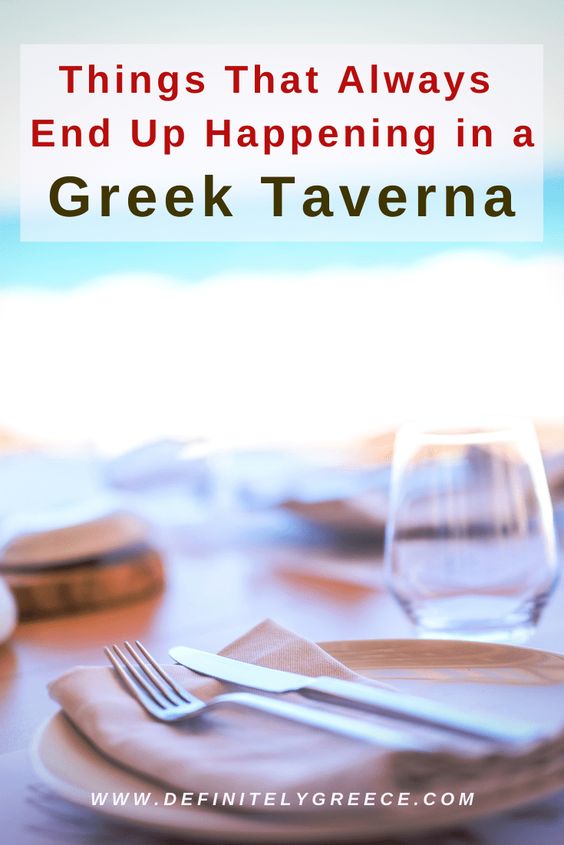











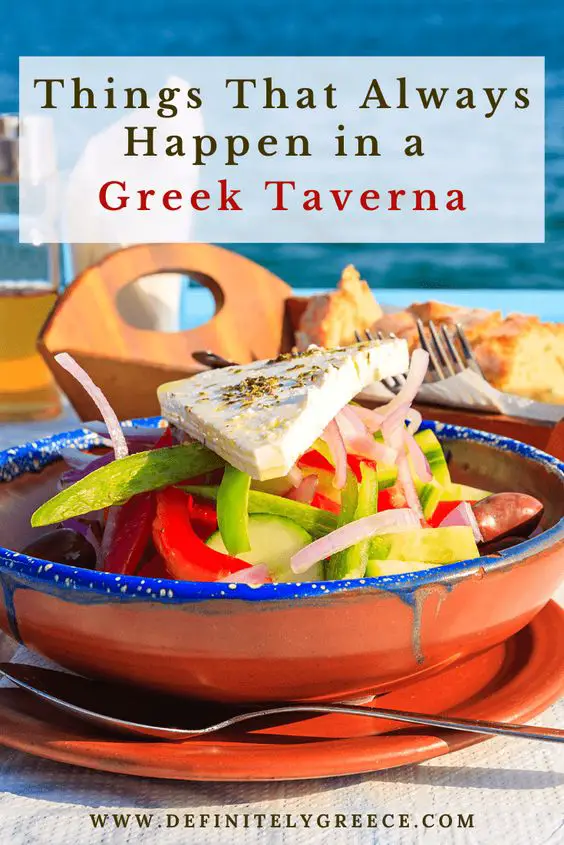







Rania Kalogirou
Rania grew up in Thessaloniki and after some years of travelling around the globe has now settled down in Auckland, New Zealand. When she’s not studying to complete her undergraduate degree she’s either reading, writing or exploring the outdoors.
She loves going on mini adventures, whether it is an impromptu road trip, exploring her local op shops and antique shops or going on multi-day hikes. She is interested in photography and strongly believes that feta should be consumed with every meal.
She also thinks Greece is the best holiday destination and invites anyone that thinks otherwise to prove her wrong.



